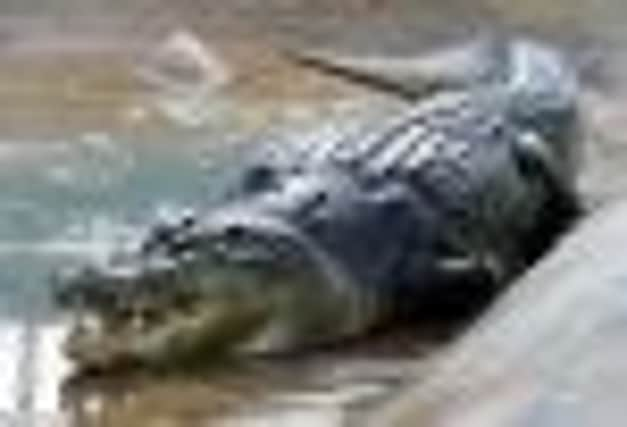World’s largest crocodile dies


Lolong, who measured more than 20 ft from snout to tail, turned belly up and died despite attempts to revive him.
His death dashes hopes that the massive reptile could transform the fortunes of the southern Philippine backwater, which came to international prominence following his capture in September 2011.
Advertisement
Hide AdAdvertisement
Hide AdLolong’s presence at the eco-tourism park in Bunawan had already begun to draw tourists, revenue and development to the town, where locals were yesterday reduced to tears.
A veterinarian rushed to the eco-park in Agusan del Sur province yesterday to check the one-tonne crocodile after it flipped over with a bloated stomach.
The reptile was declared dead a few hours later, Bunawan town mayor Edwin Cox Elorde said.
Guinness World Records proclaimed the giant, blamed for deadly attacks before it was captured in 2011, the largest saltwater crocodile in captivity last year, saying it measured 20.24 ft.
The reptile took the top spot from an Australian crocodile that measured more than 17 ft and weighed nearly a tonne.
Authorities will try to determine what caused the death of the reptile, which had become a star attraction of the marshy town of 37,000 people about 515 miles southeast of Manila, Mr Elorde said. Experts estimate that the crocodile was more than 50 years old.
Veterinarian Alex Collantes said he and park personnel tried to revive the beast by immersing it in lukewarm water amid the unusually cold weather this month that may have affected the reptile’s condition.
But the crocodile died, reducing its caretaker and some villagers that gathered at the park to tears, he said. “I’m really depressed,” Mr Elorde said by telephone from Bunawan. “I’ve come to love that crocodile. It had brought fame to our town and the Philippines.”
Advertisement
Hide AdAdvertisement
Hide AdThe crocodile’s capture sparked celebrations in Bunawan, but it also fostered concerns that more giant crocodiles might lurk in a marshland and creek where villagers fish. The crocodile was captured with steel cable traps during a three-week hunt after a child was killed in 2009 and a fisherman went missing. Water buffalos have also been attacked by crocodiles in the area.
About 100 people, led by Mr Elorde, pulled the crocodile from a creek using a rope and then hoisted it by crane on to a truck. It was named “Lolong” after a government environmental officer who died from a heart attack after travelling to Bunawan to help capture the beast, Mr Elorde said.
Bunawan town officials built an eco-tourism park to house the crocodile, which had started to draw local and foreign tourists and bring revenue to the laid-back community.
Philippine officials were planning to start constructing a mile-long road to the park to accommodate the growing number of tourists, but it is unclear if the plan will now push through, Mr Elorde said.
He said he planned to have the crocodile preserved so Bunawan villagers can still marvel at it.
“I’d like them to see the crocodile that broke a world record and put our town on the map,” he said.